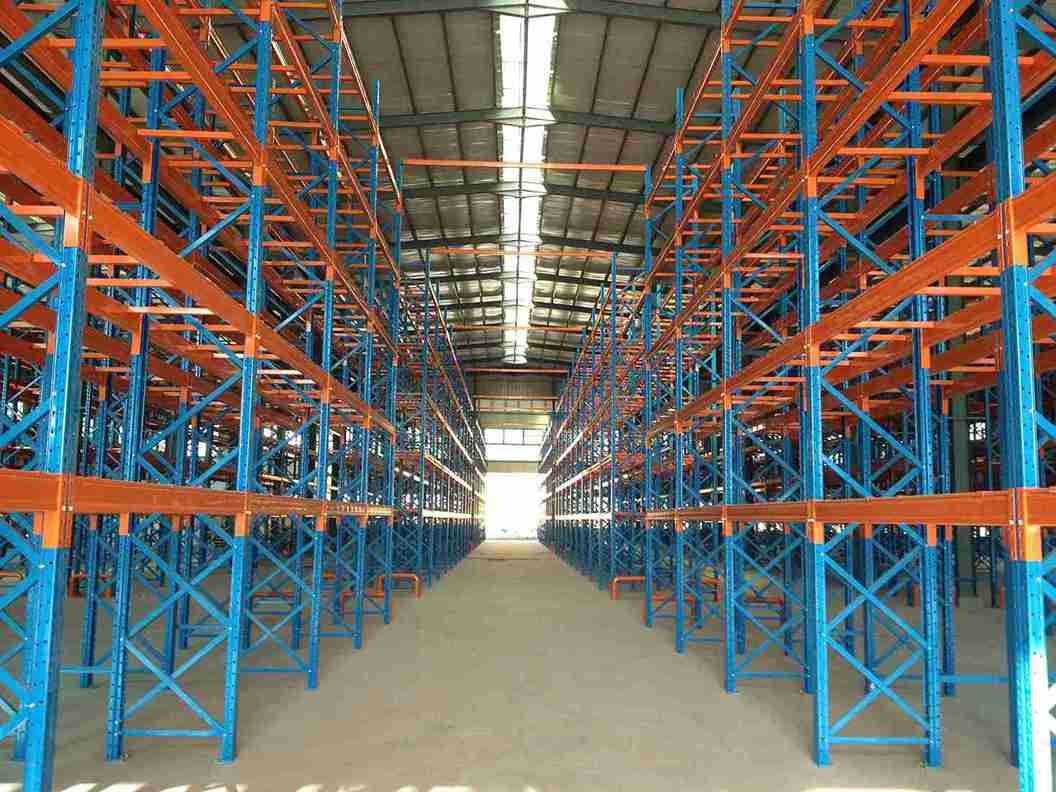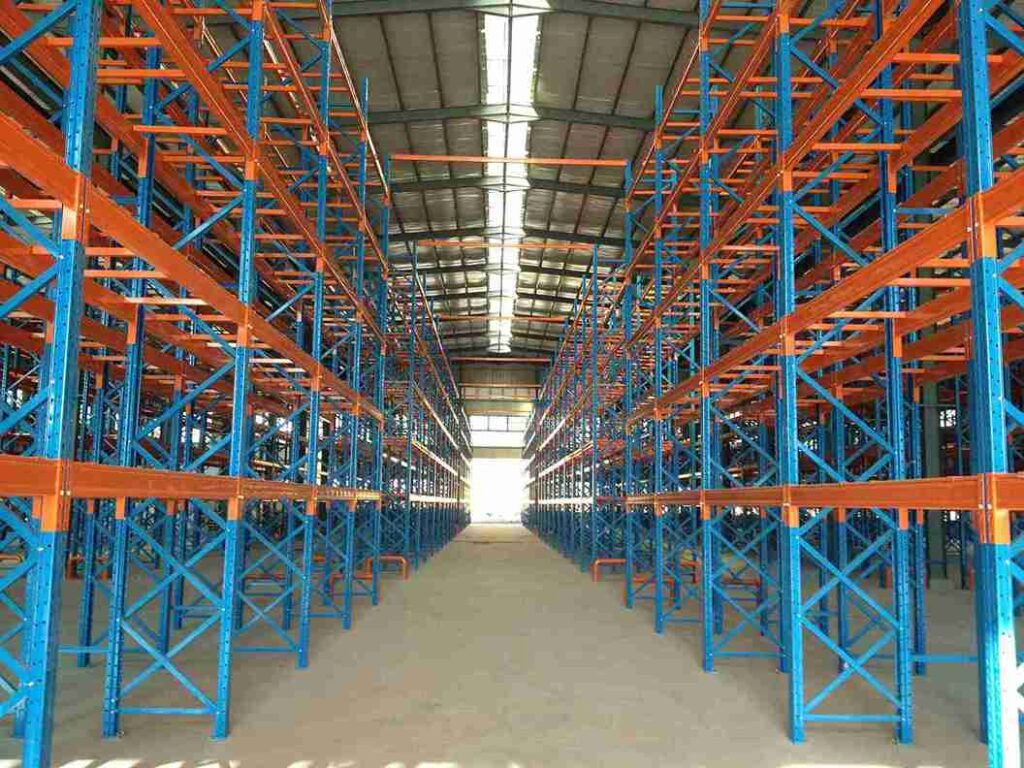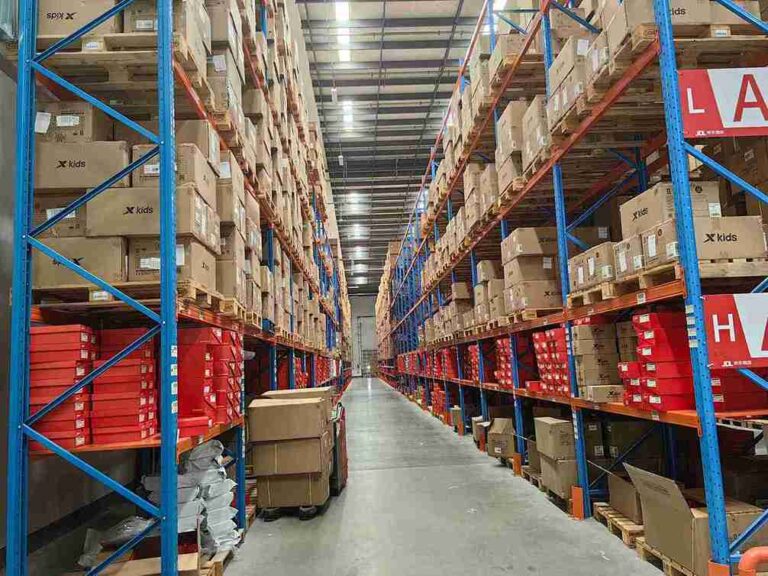📐 "First 50 Enterprise Queries Get Custom 3D Warehouse Design" Plan

Introduction
Every warehouse manager knows that pallet racking systems are essential for efficient storage—but improper installation can lead to catastrophic failures, workplace injuries, and financial losses. Learning how to install pallet racking safely isn’t just about following steps; it’s about protecting employees, inventory, and business operations.
This comprehensive guide provides step-by-step instructions, expert safety tips, and industry best practices to ensure a secure, OSHA-compliant pallet racking installation. Whether setting up a new warehouse or reinforcing existing racks, this guide covers:
- Pre-installation planning for maximum safety
- Choosing the right racking system for your needs
- Detailed steps on how to install pallet racking safely
- Critical load capacity and structural integrity checks
- Common installation mistakes and how to avoid them
- Ongoing maintenance and inspection best practices
By the end, warehouse operators, safety officers, and logistics professionals will have all the knowledge needed to install pallet racking safely and efficiently.

1. Why Learning How to Install Pallet Racking Safely is Non-Negotiable
1.1 The High Cost of Poor Installation
Failing to install pallet racking safely can result in:
- Collapsed racks, leading to worker injuries or fatalities
- Damaged inventory, causing financial losses
- Regulatory fines from OSHA or local authorities
- Operational shutdowns while repairs are made
1.2 Compliance with Industry Safety Standards
Properly learning how to install pallet racking safely ensures compliance with:
- OSHA 1910.176(b) (storage material handling requirements)
- RMI (Rack Manufacturers Institute) ANSI MH16.1
- Local building codes for seismic and wind resistance
Ignoring these standards risks legal penalties and insurance complications.
2. Pre-Installation Planning: The Foundation of Safe Pallet Racking
2.1 Warehouse Layout and Space Assessment
Before learning how to install pallet racking safely, evaluate:
- Floor strength – Concrete must support at least 3,000 PSI
- Ceiling clearance – Ensure forklifts can maneuver without collisions
- Aisle width – Narrow aisles require specialized equipment
2.2 Selecting the Right Racking System
Different storage needs require different rack types:
- Selective pallet racks (best for accessibility)
- Drive-in racks (high-density storage)
- Push-back racks (ideal for FIFO/LIFO systems)
- Cantilever racks (for long, bulky items)
Choosing the wrong system makes it impossible to install pallet racking safely.
2.3 Essential Tools for Safe Installation
To install pallet racking safely, gather:
- Laser levels for precision alignment
- Torque wrenches (bolts must meet manufacturer specs)
- Forklifts with qualified operators
- Personal protective equipment (PPE)
3. Step-by-Step Guide: How to Install Pallet Racking Safely
3.1 Preparing the Installation Site
- Clear debris to prevent trip hazards
- Level the floor – Uneven surfaces cause instability
- Mark anchor points with chalk for accurate placement
3.2 Assembling Upright Frames Correctly
- Lay frames horizontally to attach beams
- Secure connectors with proper torque (under-tightening risks collapse)
- Use a spirit level – Even a 2° tilt can weaken the structure
3.3 Installing Beams with Precision
- Start from the bottom and work upward
- Verify load ratings before securing each beam
- Ensure uniform spacing to prevent uneven weight distribution
3.4 Anchoring the Racking System for Maximum Stability
- Use seismic anchors in earthquake zones
- Torque bolts to exact specifications (over-tightening can strip threads)
- Avoid “floating” racks – All uprights must be anchored
3.5 Final Safety Checks Before Use
- Inspect every bolt and connection
- Test with dummy loads (never assume capacity)
- Verify forklift clearance (minimum 6″ overhead)
4. Critical Safety Tips for Installing Pallet Racking
4.1 Understanding Load Capacity Limits
- Never exceed manufacturer-rated weights
- Distribute weight evenly – Uneven loads cause tipping
- Use load signs to prevent overloading
4.2 Forklift and Worker Safety Protocols
- Train operators on safe maneuvering near racks
- Install column guards to prevent impacts
- Enforce speed limits (max 5 mph in aisles)
4.3 Reinforcing for Seismic and Wind Loads
- Add cross-bracing in high-risk areas
- Follow RMI guidelines for additional reinforcement
5. Common Mistakes When Installing Pallet Racking (And How to Avoid Them)
5.1 Skipping Professional Engineering Review
- Always consult an engineer for large installations
- DIY modifications often violate safety codes
5.2 Ignoring Manufacturer Instructions
- Follow assembly manuals exactly
- Never substitute unapproved parts
5.3 Poor Floor Preparation
- Uneven floors cause rack failure
- Use epoxy leveling or shims if needed
5.4 Neglecting Regular Inspections
- Monthly inspections catch early damage
- Look for dents, rust, or bent beams
6. Maintaining Safe Pallet Racking After Installation
6.1 Routine Inspection Checklist
- Check for column damage (even small dents weaken racks)
- Verify beam connections (loose bolts are a major hazard)
- Look for overloading signs (sagging beams indicate danger)
6.2 Repairing Damaged Racking Components
- Replace, don’t weld, damaged beams
- Use only OEM replacement parts
6.3 Employee Training for Long-Term Safety
- Conduct safety workshops on proper loading
- Encourage reporting of rack damage
7. Conclusion: Mastering How to Install Pallet Racking Safely
Learning how to install pallet racking safely is a non-negotiable responsibility for warehouse operators. By following engineer-approved guidelines, manufacturer instructions, and OSHA standards, businesses can:
✔ Prevent workplace injuries
✔ Avoid costly rack failures
✔ Ensure regulatory compliance
For further guidance, explore our warehouse safety training programs or request a professional rack inspection.
Frequently Asked Questions (FAQs)
1. How often should pallet racking be inspected after installation?
At least monthly, with additional checks after any impact or overload.
2. Can I modify my racking system without an engineer’s approval?
No—unauthorized changes violate safety standards and void warranties.
3. What’s the safest way to load pallet racks?
- Heaviest loads on lower levels
- Even weight distribution across beams
- No overhang beyond beam edges
4. Do I need permits to install pallet racking?
Large installations often require permits—check local building codes.
5. How do I know if my floor can support pallet racking?
A structural engineer must assess floor load capacity before installation.




